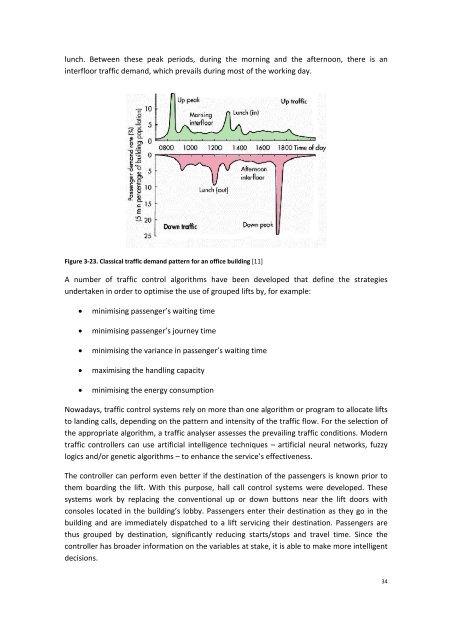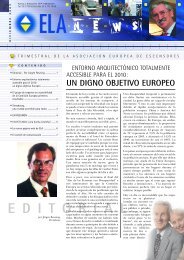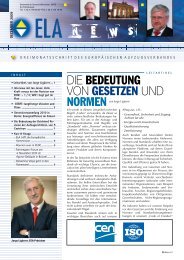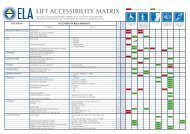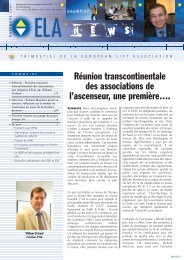WP6-Brochure-E4 brochure - ELA European Lift Association.
WP6-Brochure-E4 brochure - ELA European Lift Association.
WP6-Brochure-E4 brochure - ELA European Lift Association.
Create successful ePaper yourself
Turn your PDF publications into a flip-book with our unique Google optimized e-Paper software.
lunch. Between these peak periods, during the morning and the afternoon, there is an<br />
interfloor traffic demand, which prevails during most of the working day.<br />
Figure 3‐23. Classical traffic demand pattern for an office building [11]<br />
A number of traffic control algorithms have been developed that define the strategies<br />
undertaken in order to optimise the use of grouped lifts by, for example:<br />
• minimising passenger’s waiting time<br />
• minimising passenger’s journey time<br />
• minimising the variance in passenger’s waiting time<br />
• maximising the handling capacity<br />
• minimising the energy consumption<br />
Nowadays, traffic control systems rely on more than one algorithm or program to allocate lifts<br />
to landing calls, depending on the pattern and intensity of the traffic flow. For the selection of<br />
the appropriate algorithm, a traffic analyser assesses the prevailing traffic conditions. Modern<br />
traffic controllers can use artificial intelligence techniques – artificial neural networks, fuzzy<br />
logics and/or genetic algorithms – to enhance the service’s effectiveness.<br />
The controller can perform even better if the destination of the passengers is known prior to<br />
them boarding the lift. With this purpose, hall call control systems were developed. These<br />
systems work by replacing the conventional up or down buttons near the lift doors with<br />
consoles located in the building’s lobby. Passengers enter their destination as they go in the<br />
building and are immediately dispatched to a lift servicing their destination. Passengers are<br />
thus grouped by destination, significantly reducing starts/stops and travel time. Since the<br />
controller has broader information on the variables at stake, it is able to make more intelligent<br />
decisions.<br />
34


